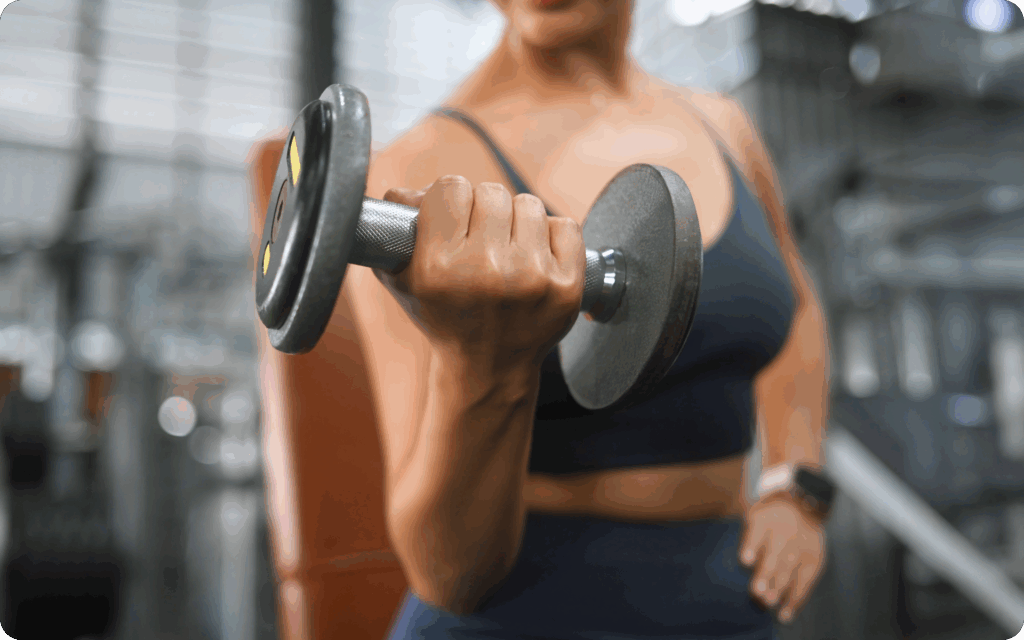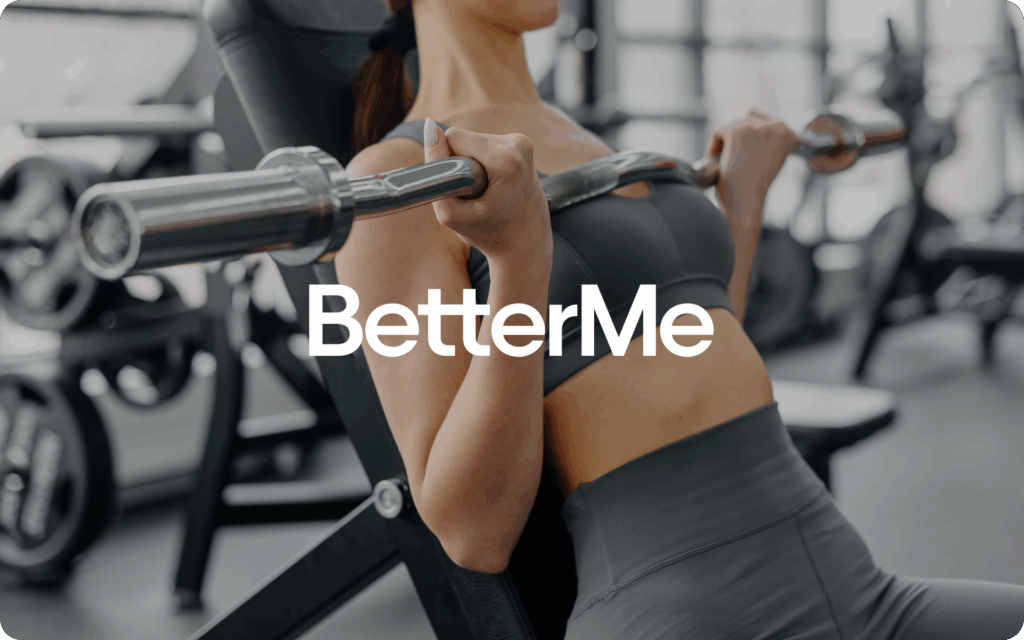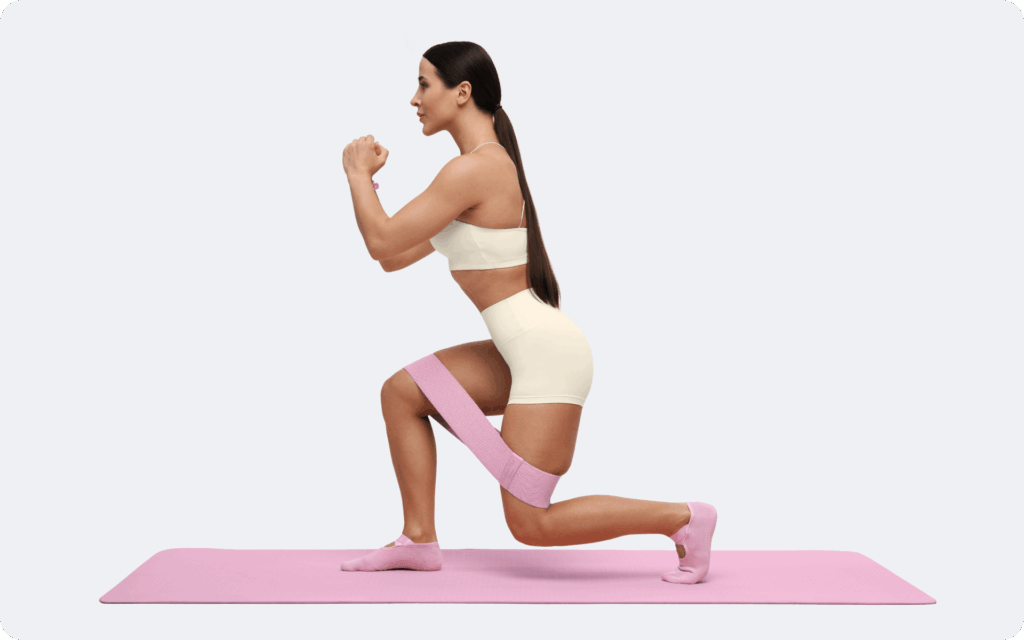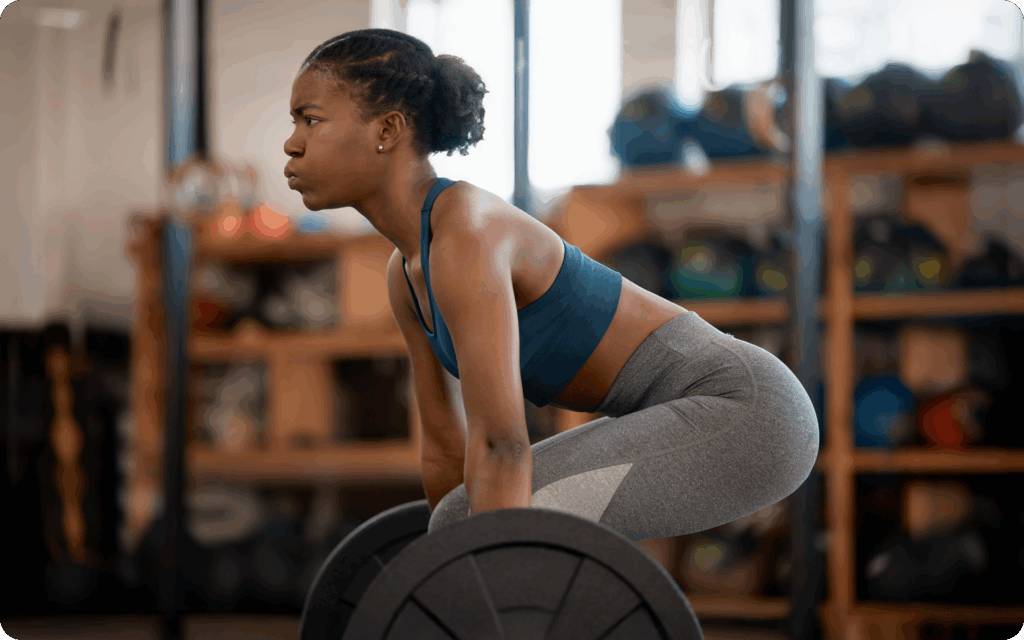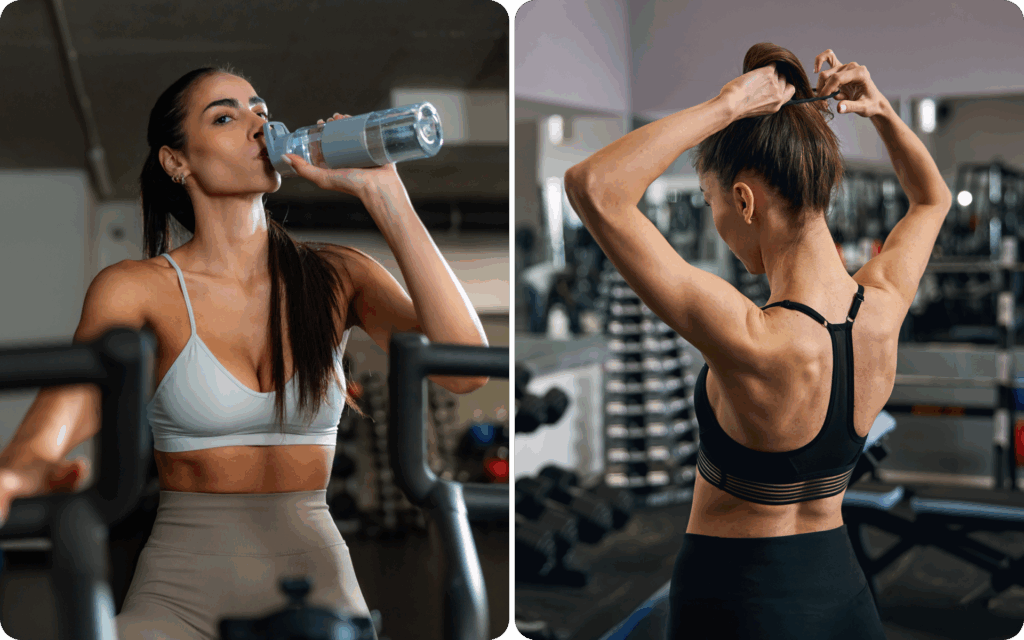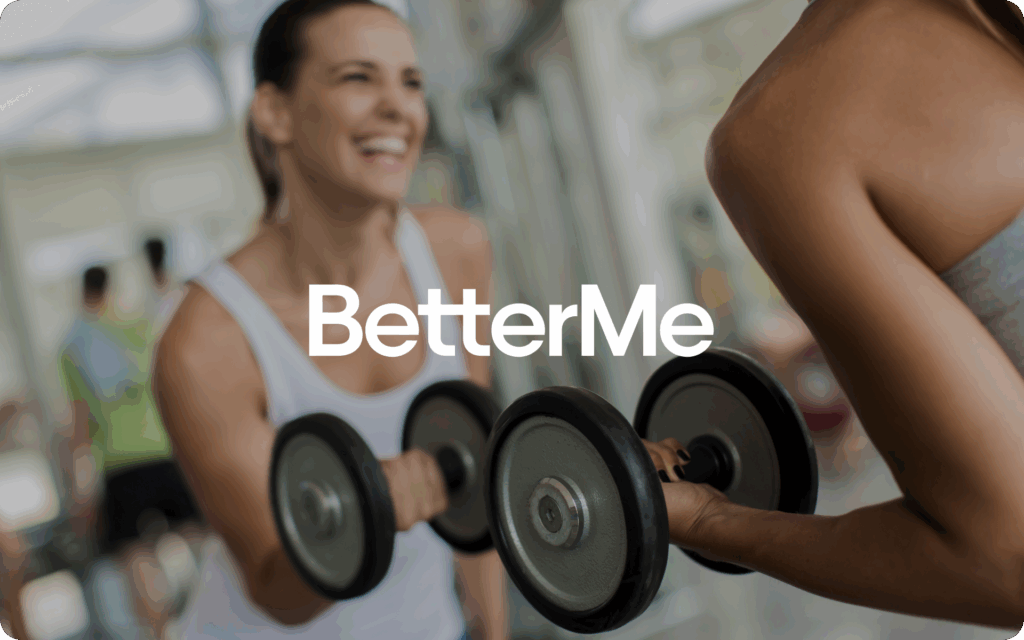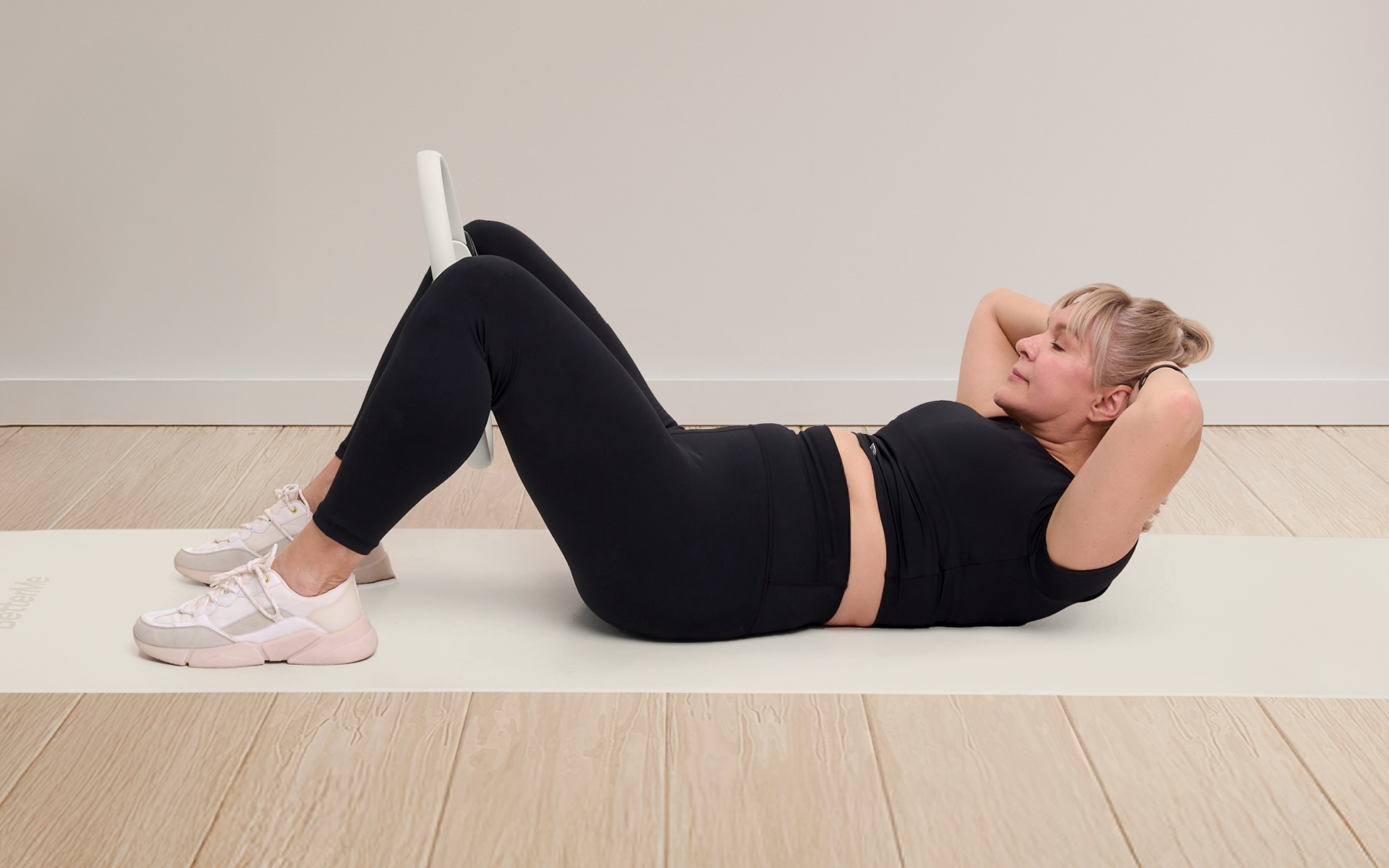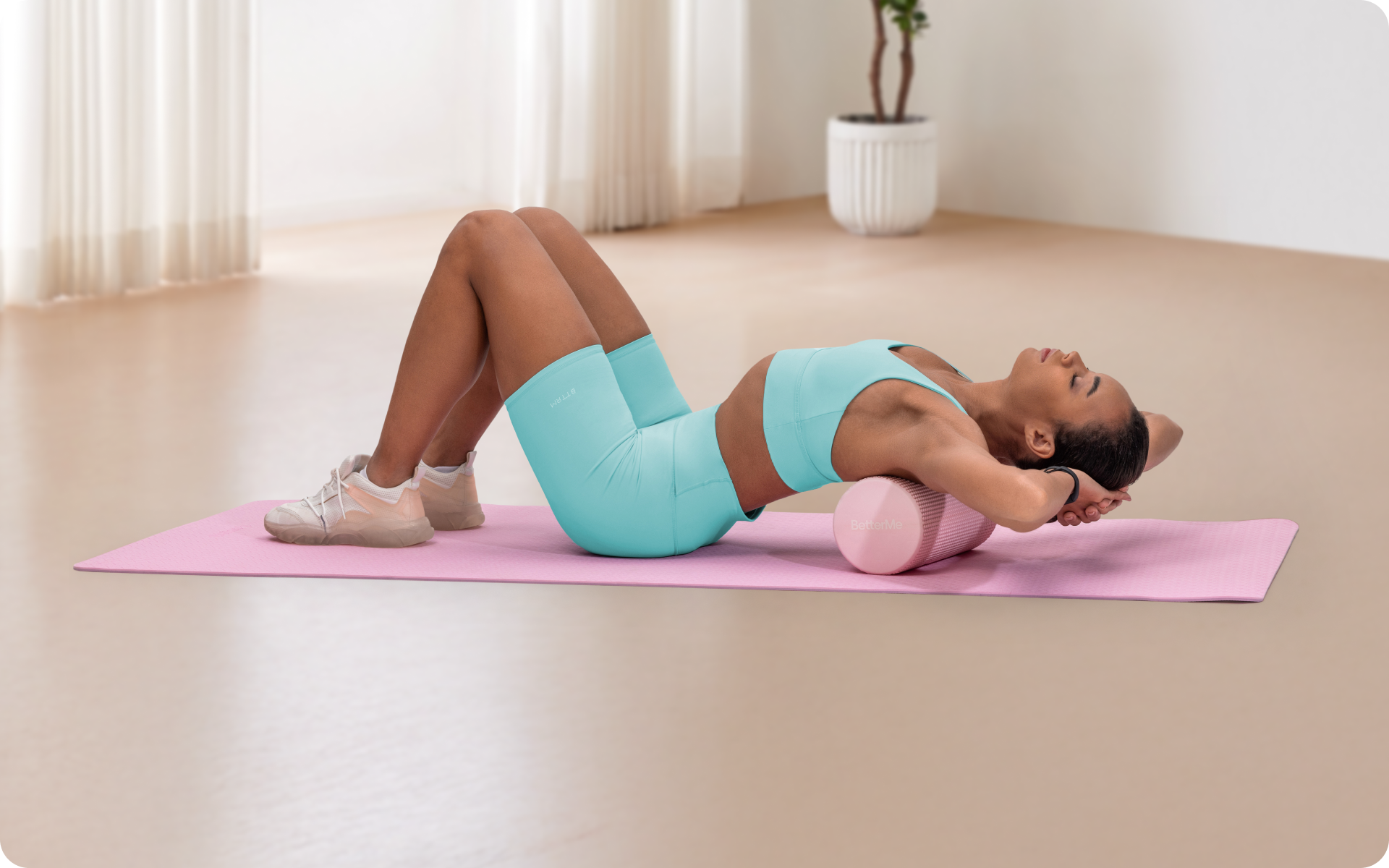Programming a training split that maximizes muscle growth while maintaining recovery isn’t guesswork; it’s science.
What is a 4-day workout split that hits each muscle twice weekly?
A workout split that targets each muscle group twice per week represents one of the most effective approaches for intermediate and advanced trainees seeking consistent muscle-building results.
This comprehensive approach balances training frequency, volume, and recovery to create optimal conditions for hypertrophy. Unlike traditional bodybuilding splits that hit each muscle once per week, this method leverages the science of muscle protein synthesis to accelerate your progress.
Here’s how to program a 4-day workout split that will train each muscle twice a week.
Is A 4-Day Split Enough To Build Muscle?
A 4-day training split provides more than adequate stimulus for significant muscle growth when properly designed.
The American College of Sports Medicine (ACSM) guidelines indicate that training each muscle group 2-4 times per week per muscle group produces significant hypertrophy adaptations (1).
The Science Of Muscle Growth
Muscle growth occurs through 3 primary mechanisms:
- Mechanical tension
- Metabolic stress
- Muscle damage (2).
A well-structured 4-day split effectively triggers all 3 pathways.
Mechanical Tension develops when muscles contract against resistance.
Progressive overload (gradually increasing weight, reps, or sets) ensures continuous tension rises over time (3). Your 4-day split allows sufficient frequency to progressively challenge each muscle group twice weekly.
Metabolic Stress accumulates when muscles work under fatigue, creating the “burn” sensation during training. The moderate-to-high rep ranges typical in 4-day splits generate optimal metabolic stress without excessive systemic fatigue.
Muscle Damage occurs at the microscopic level during eccentric (lengthening) contractions. This controlled damage triggers repair processes that ultimately build larger, stronger muscle fibers (4).
BetterMe: Health Coaching app helps you achieve your body goals with ease and efficiency by helping to choose proper meal plans and effective workouts. Start using our app and you will see good results in a short time.
Training Volume Requirements
The key factor determining muscle growth isn’t necessarily training frequency, but rather weekly training volume. Studies show that performing at least 4 weekly sets per muscle group can stimulate meaningful muscle growth, with many trainees seeing optimal results in the 6-15 weekly set range (5).
A well-designed 4-day split easily accommodates this volume requirement.
For example, if you perform 4 sets of chest exercises on 2 separate days, you’ve achieved 8 weekly sets for your pectoral muscles.
This volume falls squarely within the research-supported range for hypertrophy (5).
The Protein Synthesis Window
Muscle protein synthesis remains elevated for approximately 48-72 hours following resistance training (6, 7). This biological response explains why training each muscle twice weekly proves more effective than once-weekly training. By the time protein synthesis returns to baseline, you’re providing another training stimulus to restart the growth process.
Recovery And Adaptation
Recovery is where the magic happens. During rest periods, your muscle tissue repairs and adapts to the training stress you’ve imposed (8). A 4-day split provides 48-72 hours of recovery between sessions targeting the same muscle groups, which aligns perfectly with the body’s adaptation timeline.
The General Adaptation Syndrome (GAS) model shows us that physiological adaptations occur during the recovery phase following appropriate training stress.
Without adequate recovery, you risk entering the exhaustion phase, where performance and muscle growth plateau or decline (9).
For those new to this training approach, our 4-day workout routine for beginners provides a comprehensive starting point with progressive overload principles built in.
Read more: Gym Workout to Lose Belly Fat and Tone Muscle
Should I Workout Each Muscle Twice A Week?
Training each muscle group twice weekly represents the optimal frequency for most individuals seeking muscle growth. This frequency provides optimal training stimulus without excessive fatigue accumulation.
Research comparing training frequencies consistently shows that training each muscle group twice weekly produces superior muscle growth compared to once-weekly training (10).
A landmark study by Schoenfeld and colleagues found that participants training each muscle twice weekly gained significantly more muscle mass than those training each muscle once weekly, despite equal weekly training volumes (10).
Strength Development Considerations
From a strength perspective, practicing movement patterns twice weekly allows for better motor learning and skill refinement. Complex movements like squats, deadlifts, and bench presses require significant neuromuscular coordination.
More frequent practice leads to improved technique and strength gains.
Individual Recovery Capacity
Your ability to recover from training depends on several factors:
- Training experience and conditioning level
- Sleep quality and duration
- Nutritional status and protein intake
- Overall life stress
- Age and hormonal status
Beginners typically require 72 hours of recovery between sessions targeting the same muscle groups, while advanced trainees may recover more quickly due to improved conditioning and adaptation to training stress.
Volume Distribution Benefits
Training each muscle twice weekly allows you to distribute your weekly training volume more effectively. Instead of performing 12 sets for the chest in a single session (which may compromise performance on later sets), you can perform 6 sets across 2 separate sessions while maintaining higher intensity throughout each workout.
What Are The Most Targeted Exercises To Do On A 4-Day Workout Split?
Exercise selection for a 4-day split should prioritize compound movements that train multiple muscle groups simultaneously, supplemented by isolation exercises to address specific weaknesses or aesthetic goals.
Compound vs. Isolation Movements
Compound Exercises involve multiple joints and muscle groups simultaneously.
These movements form the foundation of effective muscle-building programs due to their ability to handle heavy loads and stimulate numerous muscles concurrently (11).
Isolation Exercises target specific muscles through single-joint movements.
While less demanding systemically, they provide targeted stimulus for muscle groups that might be undertrained through compound movements alone (12).
Essential Compound Movements
Your 4-day split should include these fundamental patterns:
- Squat Pattern: Back squats, front squats, or goblet squats for complete lower body development
- Hinge Pattern: Deadlifts, Romanian deadlifts, or hip thrusts for posterior chain strength
- Push Pattern: Bench press, overhead press, or push-ups for upper body pressing strength
- Pull Pattern: Pull-ups, rows, or lat pulldowns for upper body pulling strength.
Strategic Isolation Exercise Selection
Upper Body Isolation Options:
- Bicep curls for arm development
- Tricep extensions for arm definition
- Lateral raises for shoulder width
- Face pulls for rear deltoid development.
Lower Body Isolation Options:
- Leg extensions for quadriceps definition
- Hamstring curls for posterior thigh development
- Calf raises for lower leg development.
- Hip abductions for glute activation
Programming Strategies
Option 1: 4-Day Workout Split Upper/Lower
- Day 1: Upper body compound + isolation
- Day 2: Lower body compound + isolation
- Day 3: Rest
- Day 4: Upper body variation + isolation
- Day 5: Lower body variation + isolation
- Day 6: Rest
- Day 7: Active Rest
Option 2: Push/Pull/Legs Split
- Day 1: Push (chest, shoulders, triceps)
- Day 2: Pull (back, biceps)
- Day 3: Legs (quadriceps, hamstrings, glutes, calves)
- Day 4: Rest
- Day 5: Full Body
- Day 6: Rest
- Day 7: Active Rest
Option 3: Body Part Split
- Day 1: Chest and Triceps
- Day 2: Back and Biceps
- Day 3: Rest
- Day 4: Shoulders and Arms
- Day 5: Legs
- Day 6: Rest
- Day 7: Active Rest
Start each session with compound movements when your energy and focus are highest, then progress to isolation exercises as fatigue accumulates.
What Is A 4-Day Workout Split For Hitting Each Muscle Twice A Week?
This comprehensive upper/lower split program targets each muscle group twice weekly while allowing adequate recovery between sessions.
The program alternates between upper and lower body workouts across 4 training days.
Weekly Schedule:
- Day 1: Upper Body A
- Day 2: Lower Body A
- Day 3: Rest
- Day 4: Upper Body B
- Day 5: Lower Body B
- Days 6-7: Rest
Rest Periods: 2-3 minutes between compound exercises, 60-90 seconds between isolation exercises.
Rep Ranges: 6-8 reps for strength, 8-12 reps for hypertrophy, 12-15 reps for endurance
Day 1: Upper Body A
Barbell Bench Press
Sets: 4 | Reps: 6-8 | Rest: 3 minutes
The bench press targets the pectoralis major, anterior deltoids, and triceps through a horizontal pushing motion (13). Proper execution emphasizes controlled descent and explosive concentric drive.
Execution:
- Lie on the bench with eyes directly under the barbell.
- Grip bar slightly wider than shoulder-width with full hand contact
- Create upper back tension by retracting the shoulder blades.
- Lower bar to chest with 2-second eccentric tempo
- Press bar explosively while maintaining back arch
- Complete lockout without losing shoulder blade contact
Bent-Over Barbell Row
Sets: 4 | Reps: 8-10 | Rest: 2-3 minutes
The bent-over row develops the latissimus dorsi, rhomboids, middle trapezius, and posterior deltoids while challenging core stability (14).
Execution:
- Stand with feet hip-width apart, holding the barbell with an overhand grip.
- Hinge at the hips to create a 45-degree torso angle
- Maintain neutral spine with slight knee bend.
- Row bar to lower chest by driving elbows back
- Squeeze shoulder blades together at the top position.
- Lower bar with control to full arm extension
Overhead Press
Sets: 3 | Reps: 8-10 | Rest: 2-3 minutes
The overhead press builds shoulder stability and strength through vertical pressing motion while engaging the entire kinetic chain (15).
Execution:
- Stand with feet shoulder-width apart, core engaged.
- Position the bar at shoulder height with hands slightly outside the shoulders.
- Press the bar directly overhead in a straight line.
- Achieve full arm extension without arching back excessively.
- Lower bar to shoulder height with control
- Maintain a tight core throughout the entire movement.
Pull-Ups
Sets: 3 | Reps: 8-12 | Rest: 2 minutes
Pull-ups develop lat width, rhomboid strength, and grip endurance through vertical pulling motion (16).
Execution:
- Hang from the bar with your hands slightly wider than your shoulders.
- Engage core and maintain hollow body position.
- Pull the body upward by driving the elbows down and back.
- Clear chin over bar at top position
- Lower body with control to full arm extension
- Avoid swinging or momentum throughout movement.
Dumbbell Bicep Curls
Sets: 3 | Reps: 12-15 | Rest: 60 seconds
Bicep curls isolate the biceps brachii while improving elbow flexion strength and arm development (17).
Execution:
- Stand with dumbbells at your sides, palms facing forward.
- Keep elbows close to the torso throughout the movement.
- Curl weights upward with smooth, controlled motion.
- Squeeze biceps at the top position.
- Lower weights slowly to full arm extension
- Avoid swinging or using momentum.
Tricep Dips
Sets: 3 | Reps: 10-15 | Rest: 60 seconds
Tricep dips target the triceps brachii through bodyweight resistance while improving functional pushing strength.
Execution:
- Position hands on parallel bars or bench edge
- Support body weight with arms extended.
- Lower body by bending elbows to 90 degrees
- Press upward to full arm extension.
- Maintain an upright torso throughout movement.
- Control both the lowering and lifting phases.
Day 2: Lower Body A
Back Squat
Sets: 4 | Reps: 6-8 | Rest: 3 minutes
The back squat develops overall lower body strength and power while improving hip mobility and core stability (18).
Execution:
- Position the bar on the upper trapezius with hands evenly spaced.
- Step back from the rack with feet shoulder-width apart.
- Initiate descent by pushing hips back and bending knees.
- Lower until the hip crease passes below the knee cap.
- Drive through heels to return to the standing position.
- Maintain neutral spine and chest up throughout movement.
Romanian Deadlift
Sets: 4 | Reps: 8-10 | Rest: 2-3 minutes
Romanian deadlifts target the hamstrings, glutes, and erector spinae through a hip hinge movement pattern (19).
Execution:
- Hold the barbell with a shoulder-width overhand grip.
- Stand with feet hip-width apart, slight knee bend
- Push your hips back while lowering the bar along your legs.
- Feel a stretch in the hamstrings at the bottom position.
- Drive hips forward to return to the starting position.
- Maintain a neutral spine throughout the entire range of motion.
Walking Lunges
Sets: 3 | Reps: 12 each leg | Rest: 2 minutes
Walking lunges improve unilateral leg strength, balance, and hip mobility while targeting quadriceps and glutes.
Execution:
- Hold dumbbells at your sides or position the barbell on your shoulders.
- Step forward into a lunge position with a long stride.
- Lower back knee toward the ground while maintaining an upright torso.
- Push through the front heel to step forward into the next lunge.
- Alternate legs with each forward step
- Maintain control and balance throughout the movement sequence.
Leg Press
Sets: 3 | Reps: 12-15 | Rest: 90 seconds
The leg press allows heavy loading of the quadriceps, glutes, and hamstrings in a controlled environment.
Execution:
- Sit in the leg press machine with your back firmly against the pad.
- Position feet shoulder-width apart on the footplate.
- Lower weight by bending knees to a 90-degree angle.
- Press weight upward through heels to full extension.
- Maintain constant tension without locking knees completely.
- Control both eccentric and concentric phases.
Hamstring Curls
Sets: 3 | Reps: 12-15 | Rest: 60 seconds
Hamstring curls isolate the biceps femoris, semitendinosus, and semimembranosus for posterior thigh development (20).
Execution:
- Lie face down on the hamstring curl machine
- Position ankles under roller pad with knees just off the bench edge
- Curl heels toward glutes by flexing knees.
- Squeeze hamstrings at the top position.
- Lower weight slowly to full knee extension
- Maintain hip contact with the bench throughout the movement.
Calf Raises
Sets: 4 | Reps: 15-20 | Rest: 45 seconds
Calf raises develop the gastrocnemius and soleus muscles while improving ankle stability and lower leg strength.
Execution:
- Stand on the balls of your feet on the calf raise platform.
- Allow heels to drop below the platform level for a stretch.
- Rise onto the toes by contracting calf muscles.
- Hold peak contraction for one second.
- Lower heels slowly to stretched position
- Maintain balance and control throughout the full range of motion.
BetterMe will shake off your mental funk, rid you of your energy-zapping habits, and help you sculpt the body of your dreams. Intrigued? Hurry up and change your life for the better!
Day 4: Upper Body B
Incline Dumbbell Press
Sets: 4 | Reps: 8-10 | Rest: 2-3 minutes
Execution:
- Set the bench to a 30-45 degree incline
- Hold dumbbells at shoulder level with palms facing forward.
- Press weights upward and slightly inward
- Lower dumbbells to chest level with control
- Maintain shoulder blade retraction throughout movement.
Seated Cable Row
Sets: 4 | Reps: 10-12 | Rest: 2 minutes
Execution:
- Sit at the cable machine with knees slightly bent
- Grip the handle with arms fully extended.
- Pull the handle to the lower chest while squeezing the shoulder blades.
- Return to the starting position with controlled motion.
- Maintain upright posture throughout movement.
Lateral Raises
Sets: 3 | Reps: 12-15 | Rest: 60 seconds
Execution:
- Hold dumbbells at sides with slight elbow bend
- Raise arms laterally to shoulder height.
- Lead movement with pinkies rather than thumbs
- Lower weights slowly to the starting position
- Maintain a slight forward lean to target the middle deltoids.
Day 5: Lower Body B
Front Squat
Sets: 4 | Reps: 8-10 | Rest: 3 minutes
Execution:
- Position the bar across the front of the deltoids and clavicles
- Cross arms over the bar or use a clean grip
- Squat down while maintaining an upright torso.
- Drive through heels to return to standing.
- Keep elbows high throughout movement.
Stiff-Leg Deadlift
Sets: 3 | Reps: 10-12 | Rest: 2 minutes
Execution:
- Hold the barbell with a shoulder-width grip
- Keep legs relatively straight with a slight knee bend.
- Hinge at the hips to lower the bar toward your feet.
- Feel the stretch in your hamstrings at the bottom.
- Return to the starting position by extending the hips.
Bulgarian Split Squats
Sets: 3 | Reps: 10 each leg | Rest: 90 seconds
Execution:
- Position the rear foot on the bench behind you
- Lower body by bending the front knee
- Keep most of the weight on the front leg.
- Push through the front heel to return to the start.
- Complete all reps before switching legs.
For those looking to maximize fat loss while building muscle, check out our 4-day workout routine to get ripped, along with additional programming considerations.
Read more: Female Body Toning Workout Plan: Exercises, Tips, and FAQs
Do You Need A Rest Day On A 4-Day Split?
Rest days are essential components of any effective training program, including 4-day splits. Recovery is when your body adapts to the training stimulus and builds new muscle tissue.
Physiological Recovery involves multiple systems returning to baseline or improved states following training stress.
These recovery benefits include:
Psychological Recovery addresses mental fatigue, motivation restoration, and stress hormone regulation. Chronic training without adequate rest leads to decreased performance, mood disruptions, and increased injury risk (23).
Muscle Recovery typically requires 48-72 hours for complete restoration following intense training (24). This timeframe allows damaged muscle fibers to repair and adapt, becoming stronger than before.
Nervous System Recovery may require more extended periods, especially following high-intensity or high-volume sessions. Central nervous system fatigue manifests as decreased motivation and impaired force production (25).
How To Program Rest Days Into Your Routine
Complete Rest Days involve minimal physical activity beyond daily living requirements.
These days allow maximum recovery and are essential following particularly demanding training periods.
Active Recovery Days include light movement such as walking, gentle stretching, or low-intensity recreational activities. This approach promotes blood flow and nutrient delivery while maintaining movement patterns (26).
Common scheduling approaches include:
Consecutive Training Days:
Train Monday-Thursday, rest Friday-Sunday. This approach allows for more extended recovery periods but may lead to decreased performance by the fourth consecutive training day.
Alternating Pattern:
Train on Monday and Tuesday, rest on Wednesday, and then train on Thursday and Friday, resting on weekends. This pattern provides mid-week recovery while maintaining training momentum.
Spaced Approach: Train on Monday, Wednesday, and Friday, with rest days on Tuesday, Thursday, and Sunday. This pattern maximizes recovery between sessions.
Rest days don’t necessarily mean complete inactivity.
Light activities that promote blood flow and mobility can enhance recovery, as part of an active recovery strategy:
- Walking or easy cycling
- Dynamic stretching or yoga
- Foam rolling and self-massage
- Swimming at low intensity
Avoid high-intensity activities or movements that stress the muscle groups you’ve recently trained.
Sleep and Recovery Integration
Quality sleep serves as the foundation of effective recovery. During deep sleep stages, growth hormone release peaks, protein synthesis accelerates, and memory consolidation occurs (27).
Sleep Requirements:
- 7-9 hours nightly for optimal recovery
- Consistent sleep and wake times
- A calm, dark sleeping environment
- Limited screen exposure before bedtime
Nutrition During Rest Days
Proper nutrition continues to support recovery even on non-training days.
Adequate protein intake maintains muscle protein synthesis, while carbohydrates replenish glycogen stores (28).
Rest Day Nutrition Priorities:
- Maintain consistent protein intake (0.8-1.2g per pound bodyweight)
- Include anti-inflammatory foods.
- Stay adequately hydrated
- Avoid excessive caloric restriction.
Stress Management
External stressors impact recovery capacity significantly (29). Work stress, relationship issues, and inadequate sleep all compromise your body’s ability to adapt to training stimulus.
Stress Reduction Strategies:
- Engage in enjoyable hobbies
- Maintain social connections
- Practice meditation or mindfulness.
- Prioritize stress management techniques.
Can I Get Ripped Working Out 4 Days A Week?
Getting ripped requires 2 primary components:
- Building lean muscle mass
- Reducing body fat percentage.
The best 4-day workout split will support your goals when combined with appropriate nutrition and lifestyle strategies.
To get ripped, working out 4 days a week:
- Prioritize compound movements that preserve the most muscle mass.
- Maintain training intensity even as calories decrease.
- Avoid drastically increasing training volume, as this can impair recovery during a caloric deficit.
- Ensure adequate protein intake (1.5-2.0 grams per kilogram of body weight)
- Focus on progressive overload when possible.
- Use active recovery days for low-intensity steady-state cardio.
- Add 2-3 moderate-intensity cardio sessions per week.
Getting truly “ripped” (body fat levels around 11-14% for men, 16-23% for women) requires patience and consistency (30). Most individuals can expect to lose 1-2 pounds per week with a 4-day workout routine for weight loss and muscle gain. This plan needs proper programming and balanced nutrition.
A 4-day workout routine for muscle gain provides the muscle-building and metabolic stimulus, but nutrition will be the primary driver of fat loss. Combining your training program with a moderate caloric deficit and adequate protein intake creates the ideal environment for body recomposition (31).
For those seeking a comprehensive approach to combining cardiovascular and resistance training, our 4-day workout routine for lean muscle provides detailed guidelines on integrating both training modalities effectively.
Smaller muscle groups typically recover faster than larger ones due to their reduced training volume requirements and metabolic demands. Muscles like the biceps, triceps, and calves often recover within 24-48 hours, while larger muscle groups like the quadriceps, back, and chest may require 48-72 hours for complete recovery. Recovery speed also depends on the type and intensity of exercises performed. Isolation exercises targeting smaller muscles create less systemic fatigue than compound movements that stress multiple large muscle groups simultaneously. For most intermediate and advanced trainees, training the chest once per week provides insufficient stimulus for optimal muscle growth. Research consistently shows that training each muscle group twice weekly produces superior hypertrophy compared to once-weekly training (10). The muscle protein synthesis response peaks within 24-48 hours after training (7). Training your chest only once a week means you’re missing opportunities to stimulate growth throughout the week. A twice-weekly frequency allows you to capitalize on the protein synthesis window more effectively. Visible muscle growth in 4 days is improbable. Muscle hypertrophy is a gradual process that occurs over weeks and months, not days. What you might notice after 4 days of training is attributable to cell swelling (32). Meaningful muscle growth typically becomes noticeable after 6-10 weeks of consistent training (32). The timeline varies based on training experience, genetics, nutrition, and program design. For muscle building and strength goals, perform weight training before cardiovascular exercise. Resistance training requires high levels of focus, coordination, and energy to maintain proper form and training intensity. Pre-fatiguing yourself with cardio can compromise your ability to lift heavy weights and stimulate muscle growth. If fat loss is your primary goal, the timing becomes less critical. Some research suggests that performing cardio after weights may enhance fat oxidation, as glycogen stores are depleted from resistance training (33). However, the total weekly training volume and consistency matter more than the specific timing of cardio and weight training. For those seeking a comprehensive approach to combining cardiovascular and resistance training, our 4-day workout routine for lean muscle provides detailed guidelines on integrating both training modalities effectively.Frequently Asked Questions
Which muscles heal the fastest?
Is hitting chest once a week enough?
Can you see muscle growth in 4 days?
Should you do cardio before or after weights?
The Bottom Line
A 4-day workout split hitting each muscle twice weekly represents one of the most effective training approaches for building muscle, increasing strength, and improving body composition. The key to success lies in consistent execution, progressive overload, and adequate recovery.
Remember that your training program is just one piece of the puzzle.
Proper nutrition, adequate sleep, and stress management play equally essential roles in your results. Focus on mastering the fundamentals before adding complexity to your routine.
DISCLAIMER:
This article is intended for general informational purposes only and does not serve to address individual circumstances. It is not a substitute for professional advice or help and should not be relied on for making any kind of decision-making. Any action taken as a direct or indirect result of the information in this article is entirely at your own risk and is your sole responsibility.
BetterMe, its content staff, and its medical advisors accept no responsibility for inaccuracies, errors, misstatements, inconsistencies, or omissions and specifically disclaim any liability, loss or risk, personal, professional or otherwise, which may be incurred as a consequence, directly or indirectly, of the use and/or application of any content.
You should always seek the advice of your physician or other qualified health provider with any questions you may have regarding a medical condition or your specific situation. Never disregard professional medical advice or delay seeking it because of BetterMe content. If you suspect or think you may have a medical emergency, call your doctor.
SOURCES:
- Quantity and Quality of Exercise for Developing and Maintaining Cardiorespiratory, Musculoskeletal, and Neuromotor Fitness in Apparently Healthy Adults (2011, journals.lww.com)
- The Mechanisms of Muscle Hypertrophy and Their Application to Resistance Training (2010, journals.lww.com)
- Progressive Overload Explained: Grow Muscle & Strength Today (n.d., blog.nasm.org)
- Pathophysiology of Exercise-Induced Muscle Damage and Its Structural, Functional, Metabolic, and Clinical Consequences (2020, pmc.ncbi.nlm.nih.gov)
- The Effect of Weekly Set Volume on Strength Gain: A Meta-Analysis (2017, link.springer.com)
- Resistance training alters the response of fed state mixed muscle protein synthesis in young men (2008, journals.physiology.org)
- Enhanced Amino Acid Sensitivity of Myofibrillar Protein Synthesis Persists for up to 24 h after Resistance Exercise in Young Men (2011, sciencedirect.com)
- Muscle damage and inflammation during recovery from exercise (2017, journals.physiology.org)
- Understand the General Adaptation Syndrome Model (n.d., us.humankinetics.com)
- Effects of Resistance Training Frequency on Measures of Muscle Hypertrophy: A Systematic Review and Meta-Analysis (2016, pubmed.ncbi.nlm.nih.gov)
- Compound Exercises (n.d., physio-pedia.com)
- Do Single-Joint Exercises Enhance Functional Fitness? (2012, journals.lww.com)
- Effect of Five Bench Inclinations on the Electromyographic Activity of the Pectoralis Major, Anterior Deltoid, and Triceps Brachii during the Bench Press Exercise (2020, pmc.ncbi.nlm.nih.gov)
- The Barbell Row Exercise (2017, journals.lww.com)
- Weightlifting Overhead Pressing Derivatives: A Review of the Literature (2019, pmc.ncbi.nlm.nih.gov)
- The Pull-up (2014, journals.lww.com)
- Biceps Brachii and Brachioradialis Excitation in Biceps Curl Exercise: Different Handgrips, Different Synergy (2023, pmc.ncbi.nlm.nih.gov)
- The Back Squat: Targeted Training Techniques to Correct Functional Deficits and Technical Factors That Limit Performance (2015, journals.lww.com)
- Romanian deadlift (n.d., physio-pedia.com)
- Lying Hamstring Curl With a Dumbbell (2014, journals.lww.com)
- Exploring the Science of Muscle Recovery (n.d., blog.nasm.org)
- Regulation of Muscle Glycogen Repletion, Muscle Protein Synthesis and Repair Following Exercise (2004, pmc.ncbi.nlm.nih.gov)
- Mental Fatigue in Sport—From Impaired Performance to Increased Injury Risk (2024, journals.humankinetics.com)
- Why Rest Days Are Important for Muscle Building (n.d., blog.nasm.org)
- Neural Contributions to Muscle Fatigue: From the Brain to the Muscle and Back Again (2016, pmc.ncbi.nlm.nih.gov)
- Active Recovery: Reduce Fatigue and Enhance Performance (2020, issaonline.com)
- Sleep and muscle recovery: endocrinological and molecular basis for a new and promising hypothesis (2011, pubmed.ncbi.nlm.nih.gov)
- Nutritional Strategies to Improve Post-exercise Recovery and Subsequent Exercise Performance: A Narrative Review (2025, link.springer.com)
- Psychological Stress Impairs Short-Term Muscular Recovery from Resistance Exercise (2012, journals.lww.com)
- Normal ranges of body weight and body fat (n.d., us.humankinetics.com)
- Body Recomposition: Can Trained Individuals Build Muscle and Lose Fat at the Same Time? (2020, journals.lww.com)
- Maximizing Muscle Hypertrophy: A Systematic Review of Advanced Resistance Training Techniques and Methods (2019, pmc.ncbi.nlm.nih.gov)
- Exercising with low muscle glycogen content increases fat oxidation and decreases endogenous, but not exogenous carbohydrate oxidation (2019, pubmed.ncbi.nlm.nih.gov)





